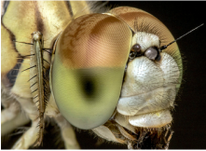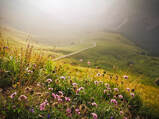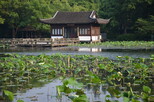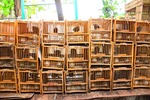Meet the Lab
Christopher Hassall (Principal Investigator)
|
I am Associate Professor of Animal Biology in the School of Biology at the University of Leeds. My research interests cover the range of biological organisation from molecular genetics through to macroecology. Particular projects at present focus on urban aquatic biodiversity, the evolution of mimicry, global change biology, radar aeroecology and the relationship between people and nature. My work involves collaborations across the University of Leeds, where I am based in the Sustainable Ecosystems and Adaptation Research Pillar. I maintain collaborations with the Institute of Psychological Sciences, where I work with psychologists to use humans as model systems to investigate evolutionary questions. I am currently Co-Director of the Leverhulme Extinction Studies DTP at the University of Leeds and help to lead the Aeroecology Research Group. You can also find me on Twitter, LinkedIn, and Google Scholar. Below is some further information on the rest of the lab (who do most of the work and make me look good!).
|
Postgraduate Researchers
Opportunities in the Lab
I am happy to consider taking on PhD students or supporting postdoc applications in any of my research areas, including but not limited to freshwater ecology, urban ecosystems, mimicry/camouflage, socio-ecology, entomology, radar ecology and climate change ecology. Please get in touch to discuss a topic.
Postgraduate (MRes/PhD) opportunities
There are a number of opportunities to come and work with me, but these often require application for funds by the student/postdoc. I currently advertise projects through Find A PhD and the PANORAMA Doctoral Training Programme (search my surname on either platform to find relevant opportunities.
Postdoctoral opportunities
For postdocs who are interested in working with me at Leeds, here are some general notes on what the Faculty of Biological Sciences can offer you. There are extensive lists of funding opportunities here and here, which are much more regularly updated than anything else I could provide here! If you have an interest in applying for one of these schemes then please do get in touch and we can try to find the scheme that is most appropriate for you.
Postgraduate (MRes/PhD) opportunities
There are a number of opportunities to come and work with me, but these often require application for funds by the student/postdoc. I currently advertise projects through Find A PhD and the PANORAMA Doctoral Training Programme (search my surname on either platform to find relevant opportunities.
Postdoctoral opportunities
For postdocs who are interested in working with me at Leeds, here are some general notes on what the Faculty of Biological Sciences can offer you. There are extensive lists of funding opportunities here and here, which are much more regularly updated than anything else I could provide here! If you have an interest in applying for one of these schemes then please do get in touch and we can try to find the scheme that is most appropriate for you.
Lab Alumni
Myrna Barjau Perez Milicua (CONACyT PhD student, 2017-21) Myrna's work analysed responses to environmental stressors in terms of the structure (survival, abundance, species richness) and function (organic matter processing) of aquatic ecosystems. Myrna was co-supervised by Alison Dunn (SoB, Leeds) and Lee Brown (SoG, Leeds).
Rebecca Robertson (NERC DTP PhD student, 2017-2022) Becky worked on the links between urban green space biodiversity and human health. Co-supervised by me, Martin Dallimer, Ian Kellar and Rosie McEachan, the project was run with the Better Start Bradford project as the CASE partner. You can read Becky's publications here.
Dominic Muenzel (PhD student, 2018-22) Dominic worked on the computational aspects of spatial conservation planning of coral reefs, with a particular focus on the incorporation of connectivity among protected areas. Primary supervisor: Maria Beger.
Harrison Tan (PhD Student 2018-22) Harri's project revolved around how we can most appropriately represent ecological systems within computational simulations. He worked on how the interacting pressures of climate change and anthropogenic disturbance impact the demography and distribution of ice-breeding pinnipeds. Primary supervisor: Simon Goodman.
Benjamin Pile (PhD student 2017-22) Ben's project is testing how multiple stressors (climate change, parasitism and invasive species) influence biodiversity structure and function in freshwater ecosystems. Primary supervisor: Alison Dunn.
Dr Carrie Easter (PhD student, 2017-20) Carrie investigated patterns of social learning in animals and extending some of those experiments to humans by using simulated encounters in virtual reality. Co-supervised with Will Hoppitt.
Dr Oloyede Adekolurejo (TET-FUND PhD student, 2017-2021) Oloyede worked on the ecological consequences of toxic microcystin-producing cyanobacterial blooms in freshwater systems.
Dr Tom Dally (PhD student, 2015-19; Postdoc 2019-2022) Tom’s PhD project focused on an empirical approach to pollinator monitoring, using fundamental and applied research. Bill Kunin was Tom's primary supervisor. Tom then joined the BioDAR team as a postdoc working on field, lab, and computational entomology.
Dr Daniel Warren (University of Leeds funded PhD student, 2016-2019) Dan explored the impacts of invasive species on aquatic ecosystems, using a variety of laboratory and field approaches.
Tom Wookey (MSc By Research 2018-2019) Tom worked on the evolution of mimicry in terms of network theory and the influence of social networks. On completion of his MSc, Tom trained to be a teacher.
Dr Jonathan Carruthers-Jones (EU ITN PhD student 2015-2019) Jonathan was an interdisciplinary PhD student who worked to understand novel methods to measure and describe wildness. He was co-supervised with George Holmes. Jonathan is now a postdoc on an AHRC project, still based at Leeds.
Dr Sonja Wild (PhD student, 2016-19) - Sonja tested hypotheses concerning the spread of behaviours through the social networks of Australian dolphins. Sonja's primary supervisor was Will Hoppitt.
Dr Robert Williams (NERC DTP PhD student, 2015-19) Rob tested ecological theories around biological invasions using invasive reptiles in the UK. Rob was co-supervised with Alison Dunn,
Dr Zak Mitchell (NERC DTP PhD student, 2014-18) - Zak did a cracking project on odonate flight ecology that produced a series of fascinating papers. Those papers will be coming out soon, meanwhile Zak is working as a Research Scientist at the Centre for Ecology and Hydrology.
Dr James Hunter (Industry-funded Masters By Research student, 2016-17) - James was only with the lab for a year, but he accomplished an enormous amount in his project on connectivity in the Humberhead Levels. James recently completed his PhD at the University of Otago in New Zealand.
Dr Giovanna Villalobos (CONACyT PhD student, 2014-18) - Gio was my first PhD student and was a dream to work with. She has produced several papers already with a couple more still to go. Now back in Mexico, she is a postdoc working on the geographical patterns of polarised light at the University of Aguascalientes.
Dr Elizabeth Morgan (NERC PhD student, 2013-17) - Liz worked on the the spatial foraging ecology and behaviour of sea birds (particularly the shags on the Farne Isles). Keith Hamer was Liz's primary supervisor.
A long list of former project BSc, MSc, MRes and MBiol dissertation students:
David (body size and latitude), Nicole (urban ponds), Alex (schools and nature), Oliver (chemical defence), Ned (size and mimicry), Tom (relaxed selection), Andrew (imperfect mimicry), Milin (intelligence and attractiveness), Simon (beetle ecology), Denny (dragonflies and biodiversity), Jenny (evolution of mimicry), Alex (ladybird mimicry), Tom (phenology and mimicry), Lucy (death feigning), Jenny (small mammal movement), Sarah (butterfly conservation), Laura (butterfly conservation), Dan (invasive geckos), Andrew (urban ponds), Marie (butterfly conservation), Liz (butterfly conservation), Doug (hoverfly evolution), Alice (quarry ecology), Mel (urban butterflies), Chrissie (evolution of mimicry), Jane (poison dart frog mimicry), Isobel (insect reintroductions), Danielle (noise and behaviour in aquatic insects), Anna (damselfly polymorphisms), Lucy (pond biodiversity), Gary (snake mimicry), Calum (turtle nesting), Danny (thermal ecology), Imanol (freshwater ecology), Rochelle (ecological traps), Samuel (brown field site ecology), Stuart (dragonfly flight), Joe (glacial streams), Ellie (reptile ecology), Harry (biodiversity and wellbeing), Sarah (environmental attitudes), Sarah (stormwater pond biodiversity), Jennette (damselfly polymorphisms), Alice (urban green space), Emma (also urban green space), Blanca (arid ecology), Shannon (pond ecology), Kate (urban pollinators), Joel (lizard behaviour), Hannah (lizard biomechanics), Miguel (lizard parasites), Ben (science communication), Tessa (entomological education), Lizzie (reptile diets), Jack (lizard distributions), Lily (urban lizard populations), Hannah (species distribution models), Zara (lizard citizen science), Rachel (newt conservation), Evan (VR and green space), Verity (ecology of urban parks), Emma (social ecology of parks), Megan (fish welfare), Robbie (bat ecology), Emma (environmental noise), Daisy (citizen science), Hannah (green space and health), Isobel (cyanotoxins), Lucy (science communication), Maja (science communication), Shangning (extreme events), Yuechun (urban freshwater restoration), Alana (ponds and dragonflies), Bethany (allotment production), Eboni (climate change and the media), Ella (pond connectivity), Laura (urban community gardens), Mateo (culturally significant species), Ben (mimicry), Eva (fencing and water quality), Aashra (algae and macrophytes), Marnie (solar farms and insects), Holly (reservoirs and invasive species), Hannah (urban tree demography), Gaia (decolonisation), Kate (science communication), Laura (podcasting and science communication), Ellie (drought in freshwaters), Matthew (insect biomechanics), Harry (insect migration), Bizzie (pollinator networks), Jenna (urbanisation and pollination), Ash (crayfish in Portugal), Tom (oak recovery in the Algarve), Ellie (canal ecology), Louis (conservation and the military).






